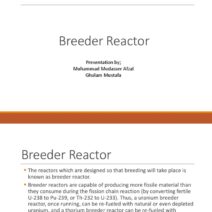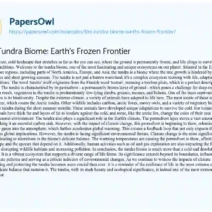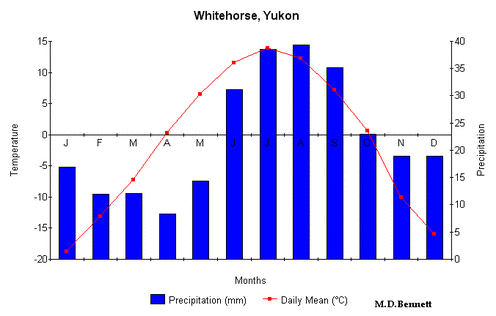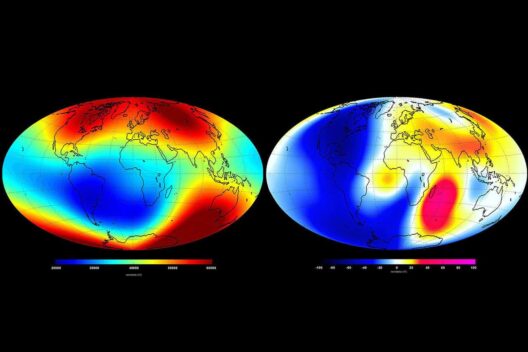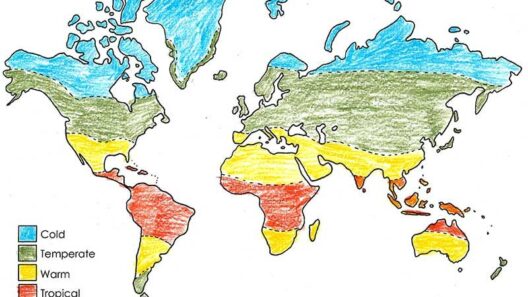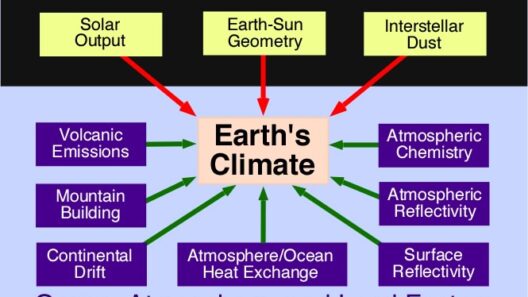The Taiga, also known as boreal forest, is the largest terrestrial biome on Earth, stretching across significant portions of Canada, Russia, and Northern Europe. Characterized by its coniferous forests, the Taiga presents a unique climate that is vital for understanding environmental changes and ecological dynamics in subarctic regions. This biome experiences extreme weather patterns, which play a crucial role in shaping its ecosystem.
Climate Characteristics
The climate of the Taiga is primarily classified as subarctic, characterized by short, moist summers and lengthy, frigid winters. The average temperature fluctuates dramatically within the seasons, creating a stark contrast between the harsh winter months and the brief summer season.
Winter temperatures can plunge below -40 degrees Fahrenheit (-40 degrees Celsius), while summer temperatures can soar to around 70 degrees Fahrenheit (21 degrees Celsius) in certain regions. The Taiga experiences a significant amount of snowfall during winter, often accumulating several feet, which contributes to the insulating layer that protects the roots of trees from extreme cold. Understanding these temperature extremes is essential to grasp how both flora and fauna have adapted their survival strategies.
Precipitation Patterns
Annual precipitation in the Taiga averages between 12 to 33 inches (300 to 850 mm), mainly falling as snow during the winter months. The precipitation is influenced by the polar and oceanic air masses that converge in this region. This relatively low level of moisture makes the Taiga one of the drier biomes compared to temperate and tropical forests.
Snowmelt during the late spring quickly replenishes the soil moisture, serving as a critical water source for plants and animals during the growing season. However, the stark seasonal variation prompts plants to develop various adaptive strategies to conserve water and withstand drought conditions in summer.
Flora and Fauna Adaptations
The flora of the Taiga mainly consists of coniferous trees, such as spruce, fir, and pine, which have evolved to thrive in the cold. These trees are characterized by needle-like leaves, which minimize water loss and allow them to withstand heavy snowfall. Their conical shape prevents snow accumulation on branches, reducing the likelihood of breaking under the weight of winter precipitation.
In contrast, the fauna of the Taiga has developed various adaptations suited for a life in extreme temperatures. Species such as the moose, lynx, and snowshoe hare are well-equipped for survival; their thick fur coats protect them from cold, while their behavioral patterns include migrations and hibernation strategies that optimize energy consumption.
Seasonal Changes and Ecological Impact
The Taiga experiences significant seasonal changes, each bringing unique ecological effects. In spring, thawing snow and melting ice cause a surge of life as animals emerge from hibernation and migratory birds return from warmer climes. The blooming of lichens, mosses, and early flowering plants kick-starts this brief, yet vibrant growing season.
Summer is a time of abundance, allowing flora to photosynthesize extensively and laying the foundation for various food chains. However, the short growing season limits the time for many species to reproduce and reach maturity, affecting overall biodiversity. Late summer also brings changes, with the onset of cooler temperatures signaling an end to this lush period.
Autumn is marked by a stunning transformation as leaves turn vibrant hues of yellow, orange, and red. But this beauty is ephemeral. The falling leaves play a crucial role in nutrient cycling, enriching the soil for the coming spring. Winter follows rapidly, blanketing the Taiga in deep snow, and this white cover represents both challenge and protection for myriad species.
Climate Change Implications
One of the most pressing concerns regarding the Taiga is how climate change is altering its fundamental characteristics. Temperature increments are resulting in shifts in species distribution and threatening the delicate balance of its ecosystems. Warmer winters and fluctuating spring thaw times can lead to increased pest populations, such as bark beetles, which damage hemlock and spruce forests.
Furthermore, permafrost thawing contributes to carbon dioxide and methane emissions, exacerbating the climate crisis. This phenomenon significantly impacts not only the Taiga’s flora and fauna but also global climate systems. The releasing of stored carbon into the atmosphere serves as a reminder of how interconnected ecosystems are and the urgency to address climate change comprehensively.
Conservation Efforts
Conserving the Taiga is essential for maintaining both biodiversity and global climate stability. Multi-faceted conservation strategies that include sustainable forestry practices, habitat restoration, and the establishment of protected areas are critical. Additionally, public awareness and education initiatives can foster support for these efforts, encouraging collective action to mitigate environmental impacts.
Collaboration between governments, non-profit organizations, and indigenous communities can lead to solutions that recognize the ecological importance of the Taiga while also addressing social and economic needs. Advocacy for policies that prioritize the conservation of subarctic wilderness holds promise for preserving the integrity of this vital biome.
In conclusion, understanding the climate of the Taiga and the adaptations of its inhabitants allows for deeper insights into the complexities of ecosystems and the urgent need for climate action. As a cornerstone of our planet’s environmental health, the Taiga’s fate is a reflection of humanity’s broader impact on the Earth.
